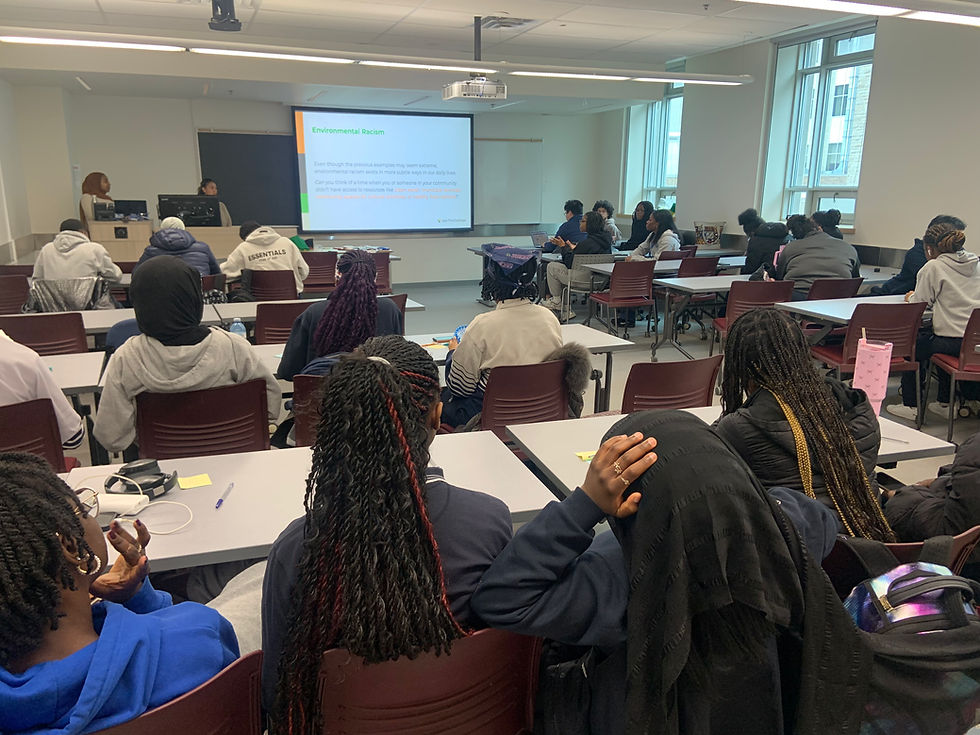The importance of building trust in a learning environment - and how to do it online
- Andrea Hemmerich

- May 25, 2021
- 3 min read
Most of us are probably aware of how challenging the last year has been for students, educators, and parents as we navigate between in-person and online schooling due to the pandemic. The challenges are not merely about learning how to use online platforms or revising educational materials to be accessible in a virtual environment. What we’ve discovered is that the greatest and most important challenge is for students to feel connected — to their peers and teachers and to something bigger than themselves that will motivate them to continue participating.

In order to feel connected, we need to create an environment in which students can be vulnerable without fear of judgement — not unlike the concept of psychological safety in the workplace as described by Amy Edmondson, professor at Harvard Business School — and we need to build trust for that to happen.
Creating trust is an especially grand challenge that I believe has been largely overlooked or taken for granted in education. Like many issues that have become more apparent as a result of COVID19, we are now more aware of how difficult it can be to create and maintain trust with learners, especially in an online environment where there may be a constant background fear about privacy and how our images and voices might be recorded and shared on the internet. Even if students feel comfortable turning on cameras or microphones, it is still more difficult to gauge their interest and understanding than in-person due to limitations in what we can observe through that little box that reveals just a face… or in many cases just an icon. The frustrations associated with access to technology and the inevitable disruptions to the flow of conversation due to internet outages or because “You’re muted” further impede participation and creative expression in a virtual environment. It’s just not the same as having a dialogue with someone sitting next to you or observing how group members are interacting with one another while working with physical materials.
These were just a few of the issues raised in our brainstorming session with various community partners last June to address how to best meet the needs of our participants during the pandemic. What we gained from the ideas generated during that session and then tested —design thinking style — in subsequent online workshops is that once digital trust was established, emotional trust could be built and strengthened in ways that actually resembled how we achieve this in an in-person environment.
To build emotional trust, we focussed on several aspects of our workshops. The first was to create opportunities for participants to engage and get creative ‘behind the scenes.’ For those who did not want to share ideas with cameras or microphones on, we encouraged participation through chats, polls, and shared documents such as Google Slides. We took that a step further by encouraging them to contribute visually, rather than through text: using images and sketching. It becomes much more comfortable to share when your peers are drawing silly sketches and uploading images of pigs rolling in mud!
To reach that level of comfort we found it was important for us as facilitators to model our own vulnerability through open dialogue during each session together. We shared our own needs and frustrations — everything from our failed gardening ventures to Alfred, our collaborating Engineer in Residence, revealing his authentic self as he invited us into his home (virtually) for lunch, and to our own uncertainties around a lack of real-time feedback from participants during workshops. In turn, our high school participants shared their frustrations with how irrelevant and disconnected some of their assignments felt. The conversation with teachers became quite raw when they described the difficulties they faced supporting students’ mental wellbeing on top of the demanding expectations to cover at least an appreciable aspect of the Ontario science curriculum — normally very hands-on — virtually.
Once trust was established, our next step was to recognize their courage in exposing their vulnerability. We felt small gestures as simple as giving voice to someone’s idea from the shared document seemed to legitimize their contribution. Being curious about the ideas that were offered and what people’s experiences were also helped others build on a common understanding of the issue.
What became more evident as we continued to conduct workshops online is how much participants need and value connection even in its transformed, virtual manifestation. The underlying principles — be it online or in-person — remain the same: students find connection through fun and engaging content that resonates with them, by collaborating with one another in supportive, non-judgmental ways, and by recognizing the value of their personal experiences and contributions as well as those of others.
If you’ve had experiences building trust and connection with youth within our current pandemic boundaries, please share with our community by adding a comment below!







Comments